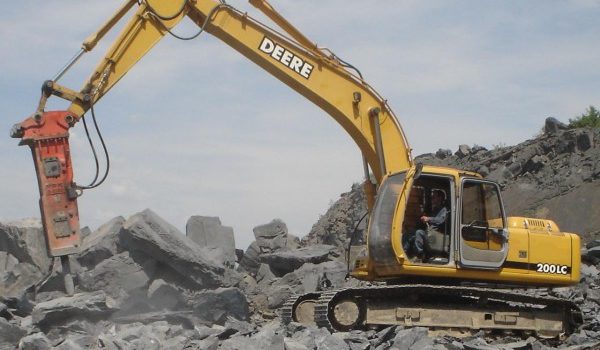Hydraulic Breaker Care Maintenance – The Complete Guide
Hydraulic breakers are powerful hammers fitted to an excavator for bringing down concrete and rock structures. An auxiliary hydraulic system powers a hydraulic breaker; it comes fitted with a foot-operated valve. Hydraulic breakers work to break asphalt and other construction material.
Every type of hydraulic breaker regardless of the design and manufacturer has the task of breaking down hard material, which is not an easy task to accomplish. The work creates a lot of pressure on the equipment, which then might need proper maintenance to run at its peak efficiency. Any lack of routine maintenance can lead to the derailing of a project and cost time as well as money.
What are the uses of Hydraulic Breaker?
Hydraulic breaker, also known as rock breaker is most useful for breaking rock and concrete structures. Apart from bringing down solid structures, hydraulic breakers are utilized for the following purposes;
Rock Mining
The hydraulic breakers are useful for rock mining and can enhance productivity. Without blasting and clearing, it saves a lot of time. Using a rock breaker for rock mining can significantly reduce the load on the primary crusher. Thus, it offers the choice of having control over the grain size and reduction of the material. AS compared to blasting, which has emissions; the breaker is more of an environmentally friendly method. You can also search online to get the best hydraulic equipment maintenance tips.
Secondary Reduction
When the rock or concrete is brought down via blasting, the pieces might be too big and require a secondary reduction. It is here that a hydraulic breaker can help overcome the issue by reducing the size of the pieces as per need.
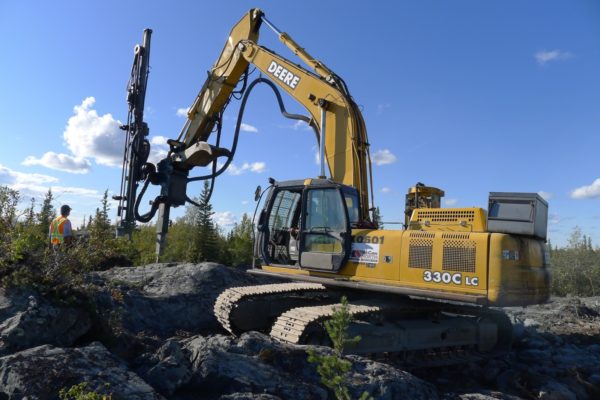
Complete Demolition
Hydraulic breakers are the ideal option for complete demolition work. These are manufactured to run for a long time without breaks. It makes executing multi-shift operations easy. Hydraulic breakers are best suited for bringing down rock and concrete structures.
What Problems Can Affect the Working of Hydraulic Breaker?
Similar to any other industrial equipment, hydraulic breaker does have its share of bad days. There are certain issues, which can affect its functioning. Given below are the top issues affecting a hydraulic breaker.
Damaged Piston
In case the rock breaker suddenly stops functioning, a broken piston might be the issue. It would require the hammer to be taken apart, and examine it from the inside. The housing needs a check for which the chisel would need to be removed. Next, the face of the piston needs to be checked for any damage; a defunct piston would be either chipped or fractured.
What one needs to notice here is a smooth piston face, however, at times, it might be broken in half. The broken piston can be a serious issue as little pieces of metal can spread like shrapnel throughout the hydraulic breaker’s hammer. Do not use the hammer if the piston is compromised.
Broken Tie Bolt
A hydraulic breaker has four tie bolts, which hold the breaker together. In case, the hammer stops working then one of the tie bolts might have malfunctioned. If one looks at the tie bolts from the hammer, there is threading visible around the ends. However, if the threading appears sheared, then it is time to get the tie bolt replaced.
Zero Gas
Inside a well-functioning hydraulic breaker, the gas pressure needs to be stable. Once the gas pressure is steady, the gas hoses would vibrate. However, when the pressure would array then the feed hose would vibrate badly. In case, you notice the fire hoses vibrating fiercely; it is time to fill in the gas in the hammer.
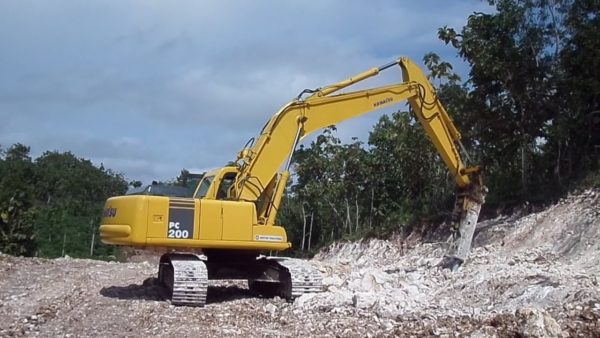
What Problems Can Affect the Functioning Of a Hydraulic Hammer?
The hydraulic hammers on a rock breaker have been designed to withstand rough use. However, certain operating mistakes while using the hydraulic hammer might shorten its lifespan. In some cases, the use is so unprofessional that a whole replacement might be needed.
Prying
Raking or prying the tool to move material is one of the most common operating mistakes. The machine operator should avoid any excessive prying as it might lead to tool breakage, and damage the hammer. At the same time, excessive side loading and firing the hammer at the same time will also lead to tool breakage. If you are moving the material with the hammer too aggressively, it can damage the surface of the tool permanently.
Not Knowing Where to Start
The hydraulic breaker operator should be trained in positioning the breaker to minimize the stress on the carrier. At times, new operators often take a big piece of the material and start right in the middle, which does not get any results but only heats the equipment. Hence, the operators need to be trained to start at either the corner or the edge of the material and work inwards and reposition the tool at the right time.
What Maintenance Tips Would Help In Keeping the Hydraulic Breaker In Its Best Shape?
An excavator-mounted hydraulic breaker is required for breaking rock, concrete, asphalt, and other construction material. To provide a longer performance, it needs regular maintenance apart from routine checks. Any delay in proper maintenance can lead to a delay in work thereby costing time, money, and resources.
Hence, the tips mentioned below would help you in providing proper maintenance to a hydraulic breaker.
Complete Visual Inspection
The first step is to perform a complete visual inspection of the hydraulic breaker for any wear and tear. Visual inspection must be performed every time before using it. It will help in identifying any particular component, which might need replacement or repair. A simple inspection would help keep the rock breaker working to its maximum capacity.
Using the Right Maintenance Tools
Majority of the rock breaker manufacturers provide a specialized tool for measuring the top angle of the breaker tool, breaker’s lower bushing, and retaining pins. The use of this tool helps in minimizing the risk of component failure.
The primary step involved in the use of the maintenance tool is to remove the retainer pins and breaker tool. After the breaker tool is removed, an inspection should be done to check for cracks. Afterward, the breaker’s bushing should be checked by inserting the maintenance tool inside it and turning it flat. The check is useful in knowing the overall health of the hydraulic breaker.
Inspecting Nitrogen Pressure
Always check the nitrogen charge pressure. It depends on the application and the working temperature outside. The level of nitrogen required for breaking a rock is different from that required for breaking concrete. The temperature outside is an important component in this.
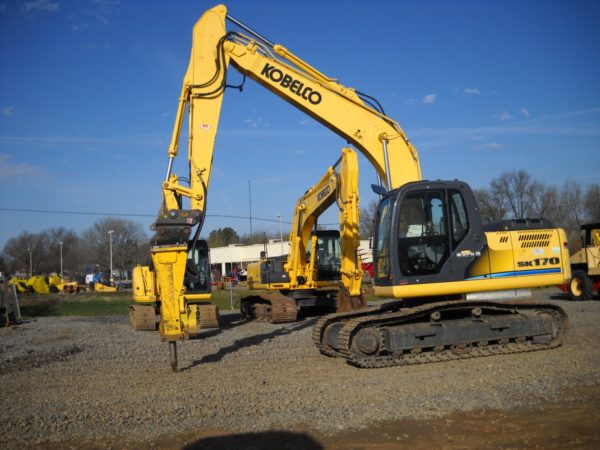
Check the Hydraulic Hoses
The hydraulic hoses from the excavator should be of the right length and routed properly to decrease wear and tear. It is an essential point to remember as short length hoses would be a hurdle in the extension length of the attachment. However, longer hoses might also become dysfunctional.
Grease the Attachment
One important maintenance tip to ensure smooth functioning of the rock breaker is regular greasing as it clears and lubricates the brushing area of any debris. Using lithium-based grease would prevent metal-to-metal contact. The grease is manufactured for higher temperatures. It will remain between the steel and brushing area, thereby providing better lubrication. Greasing of the breaker can be done either manually or through the automatic greasing system.
Using the Right Tool Point
It is important to match the tool point with the right application and maximize productivity at the job site. The hydraulic breaker can be equipped with different points. These might come with a pair of moil joints, which can be used in everyday demolition work.
The tool points in a rock breaker include:
- Chisel Tool Point
It will provide the breaker with better control when used for excavation or cutting through concrete.
- Blunt Tool Point
It breaks and fractures large pieces of concrete or block in heavy construction related application.
- Pyramidal Tool Point
The Pyramidal Tool Point is used for breaking hard, and abrasive material in demolition work.
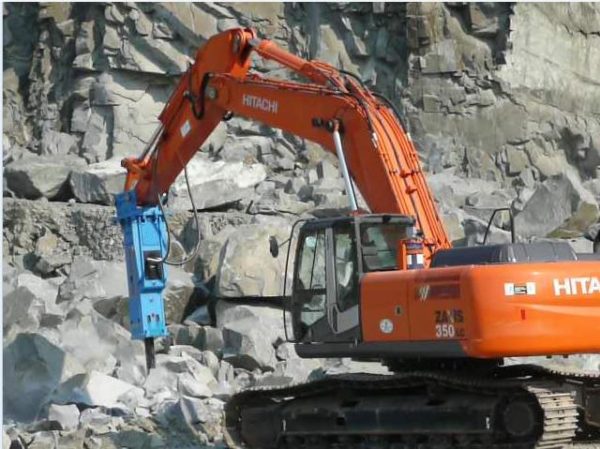
Summing Up
Thus, by following the guidelines mentioned above, you can easily take care of the hydraulic breaker for longer use.
Author bio
Richard Balston is a zealous blogger and passionate about writing articles on automobiles, construction, and technology. He’s been writing articles and blogs since 3 years and has written for website https://www.baeg.com.au/.

